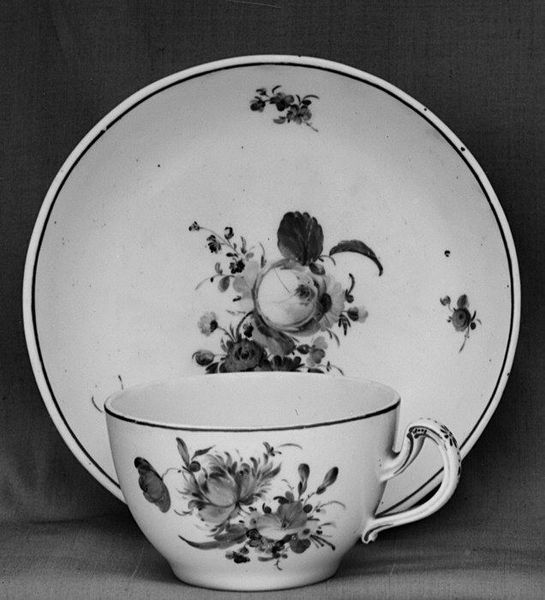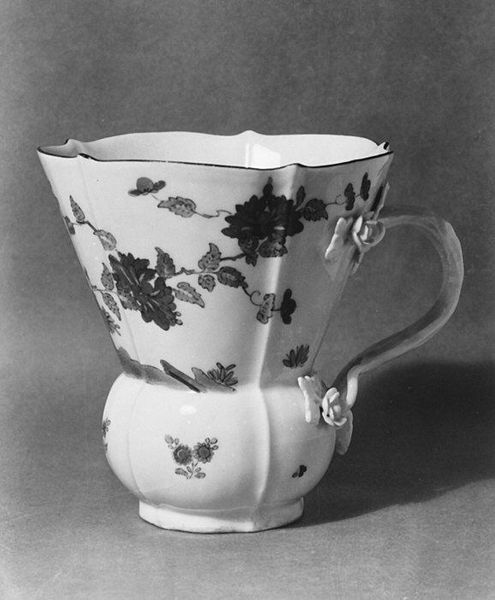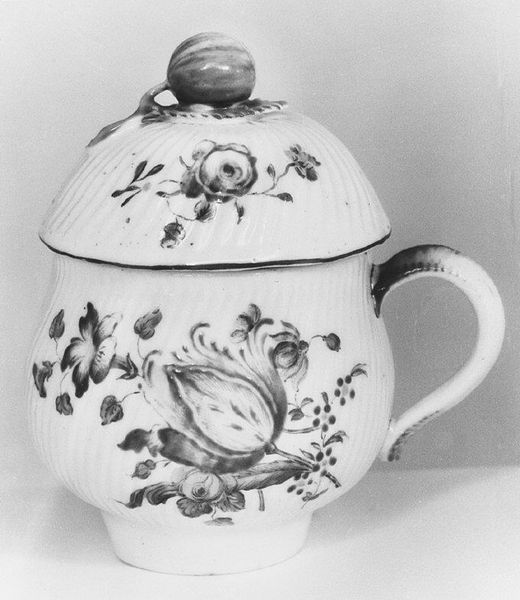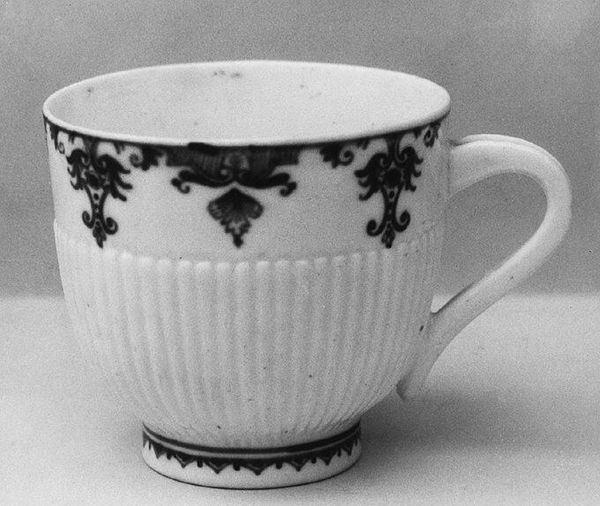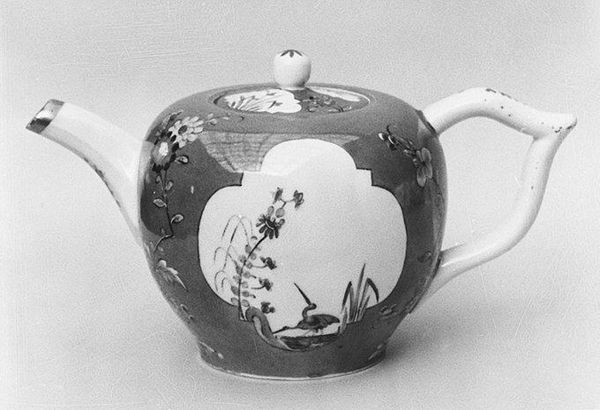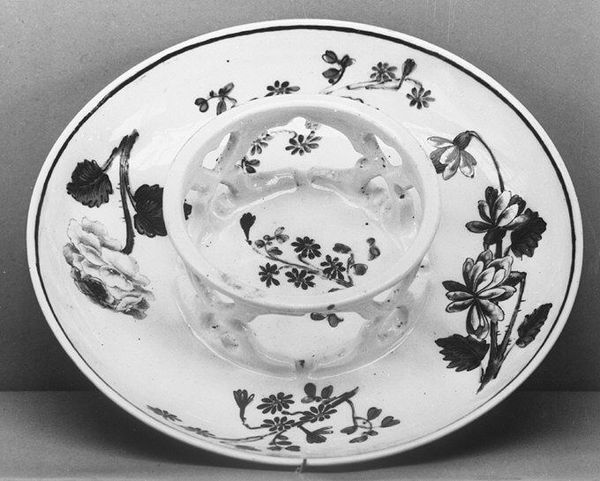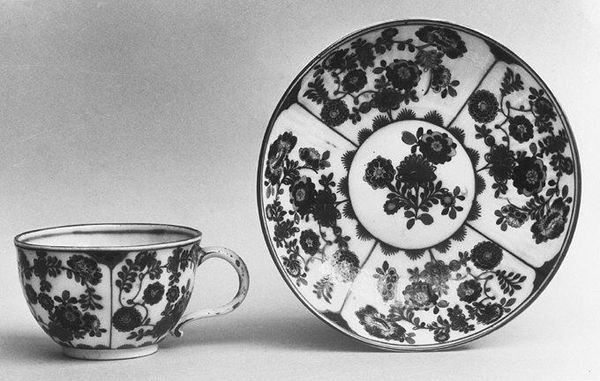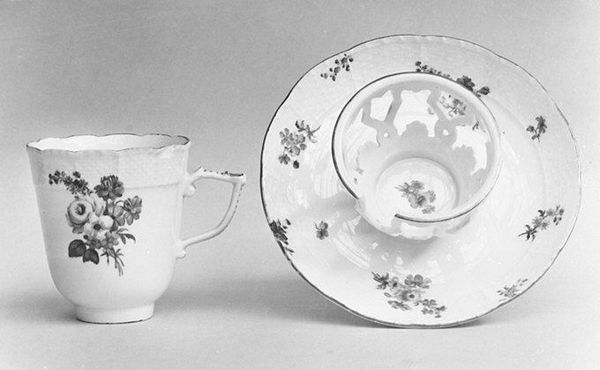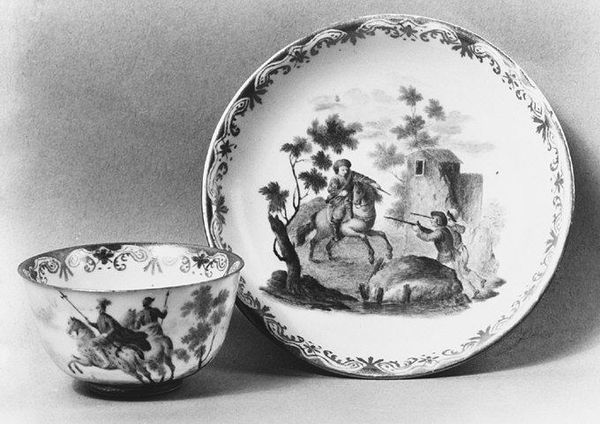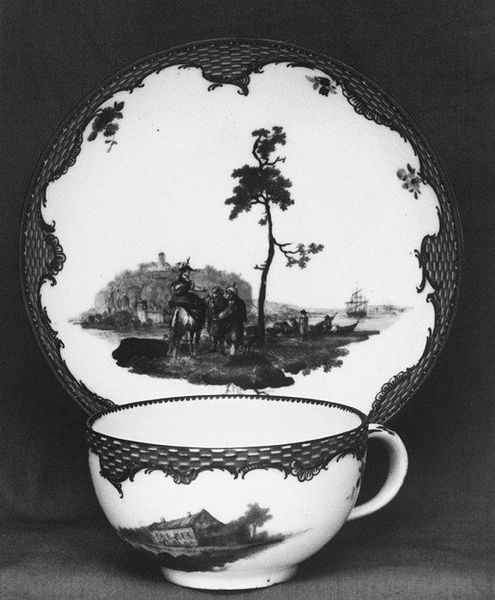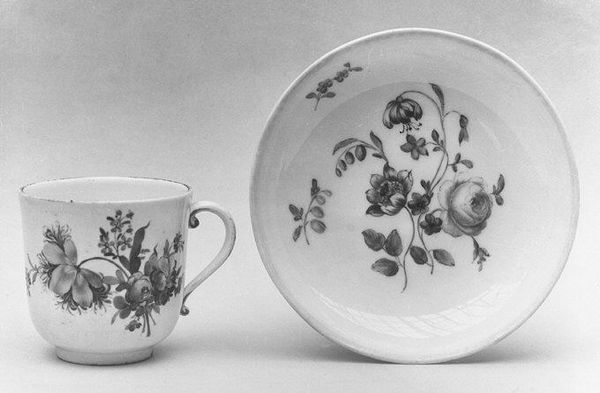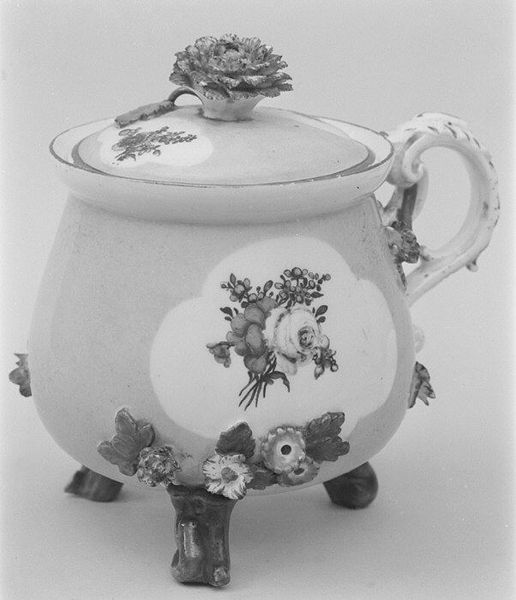
ceramic, porcelain, sculpture
ceramic
flower
porcelain
sculpture
decorative-art
Dimensions: H. 2 1/2 in. (6.3 cm.)
Copyright: Public Domain
Editor: Here we have a porcelain cup and saucer from the Meissen Manufactory, dating from the late 18th century. The floral design feels very formal, almost rigid. What can you tell us about this piece? Curator: From a materialist perspective, it's crucial to recognize this isn't just decoration. Porcelain production in 18th century Europe represented significant technological and economic power. Meissen porcelain was particularly prized and carefully guarded. Editor: How so? Curator: The techniques were so valuable they were practically state secrets. Consider the labor invested in the extraction of kaolin clay, the refining processes, the skilled artisans painstakingly painting these details, and then the intense heat of the kiln… All point to a highly organized system of production. The consumption of this cup becomes linked to privilege. What might this object represent for a typical worker during that era? Editor: Probably something unattainable. A symbol of a completely different life. Did the workers who created this even have access to similar goods? Curator: Highly unlikely. This is where we see the sharp divisions of labor and the skewed distribution of wealth inherent in the decorative arts of the period. The cup, seemingly innocent, becomes an artifact loaded with social meaning. Its existence depends on a vast network of labor, extraction, and consumption. Editor: So, viewing this cup through a materialist lens, we're really examining the whole system of production and consumption of the late 1700s. Thank you for pointing that out! Curator: Precisely! Considering material culture challenges us to confront those hidden power dynamics shaping society, through an object that may seem simple.
Comments
No comments
Be the first to comment and join the conversation on the ultimate creative platform.
